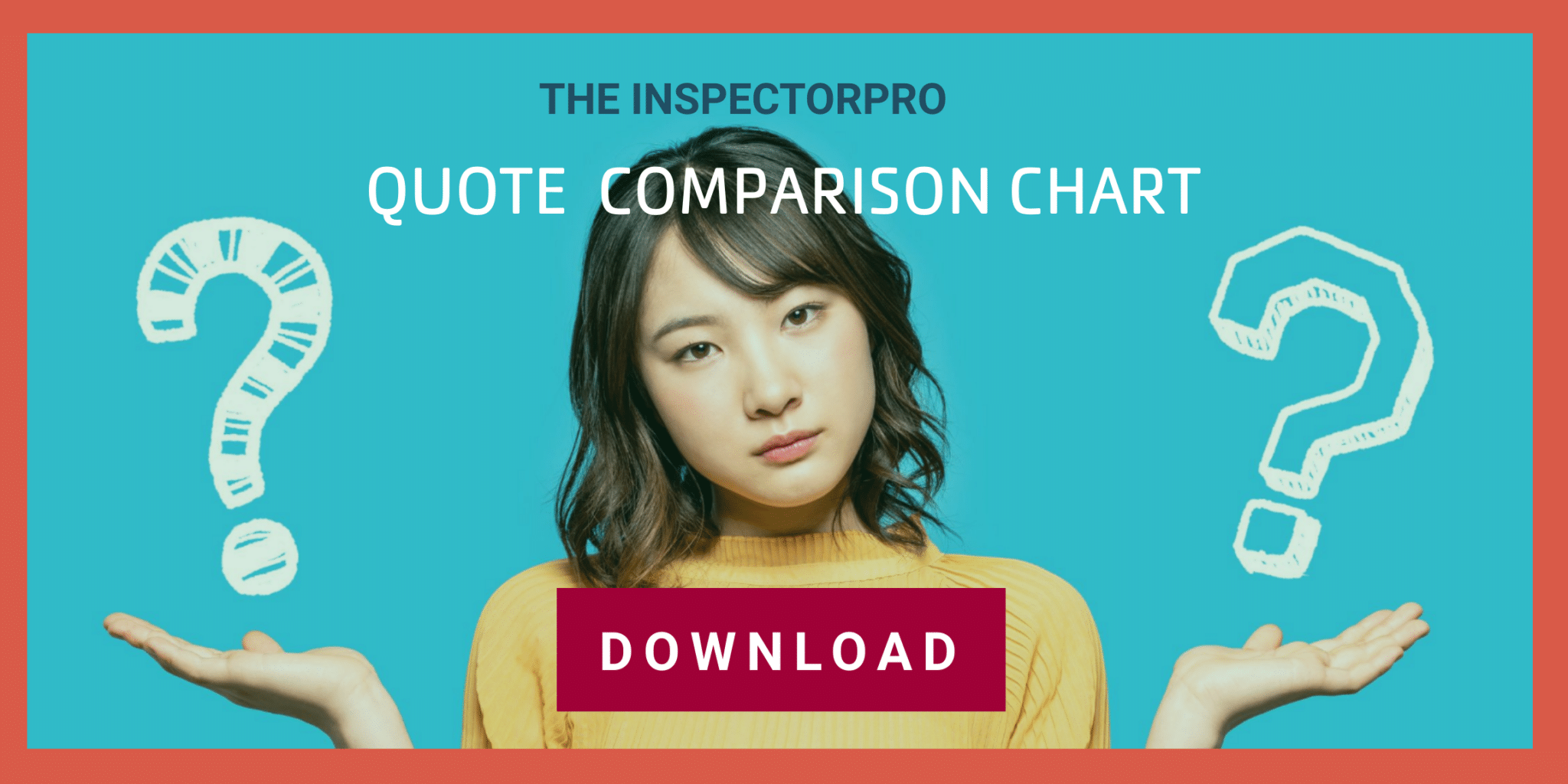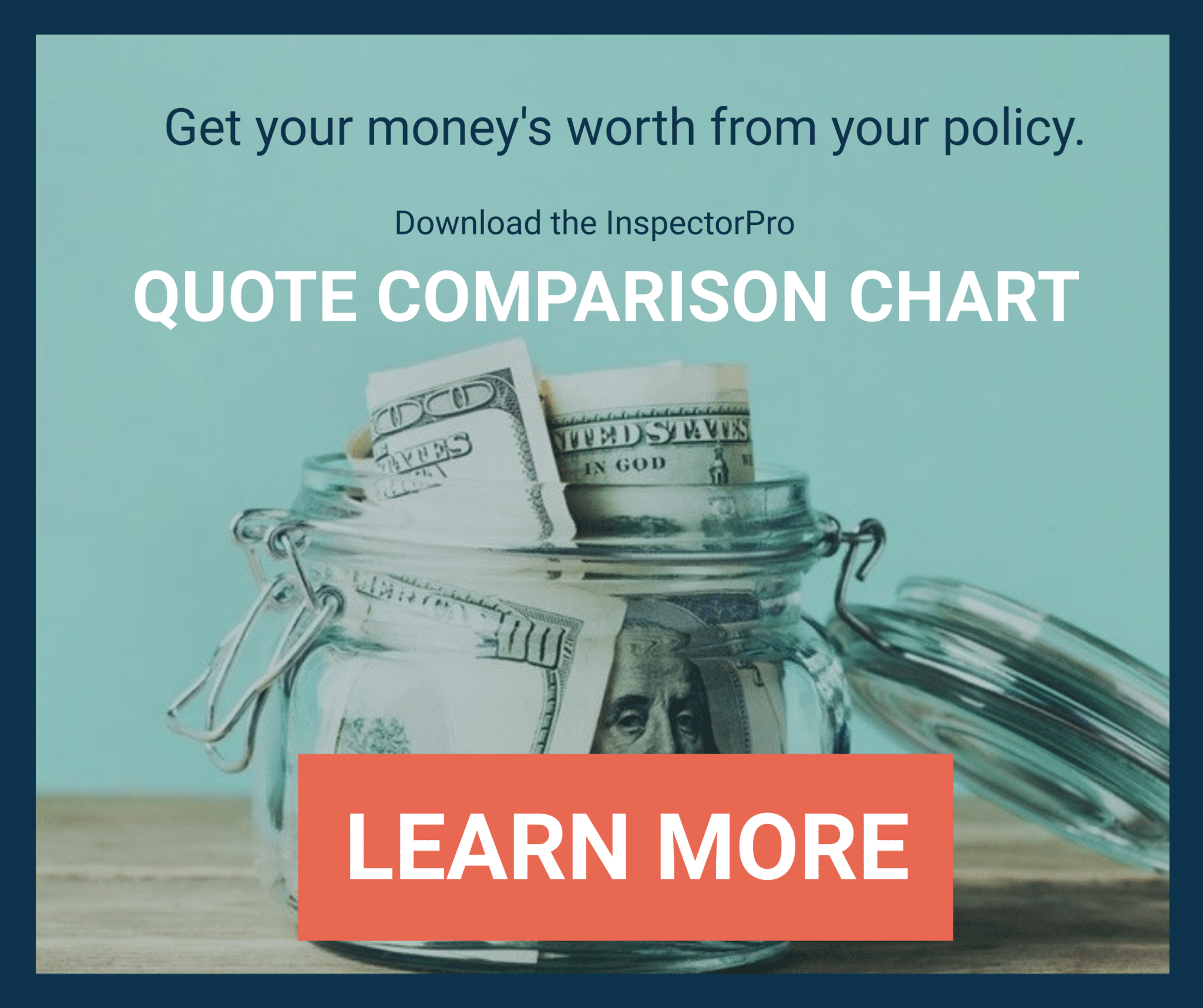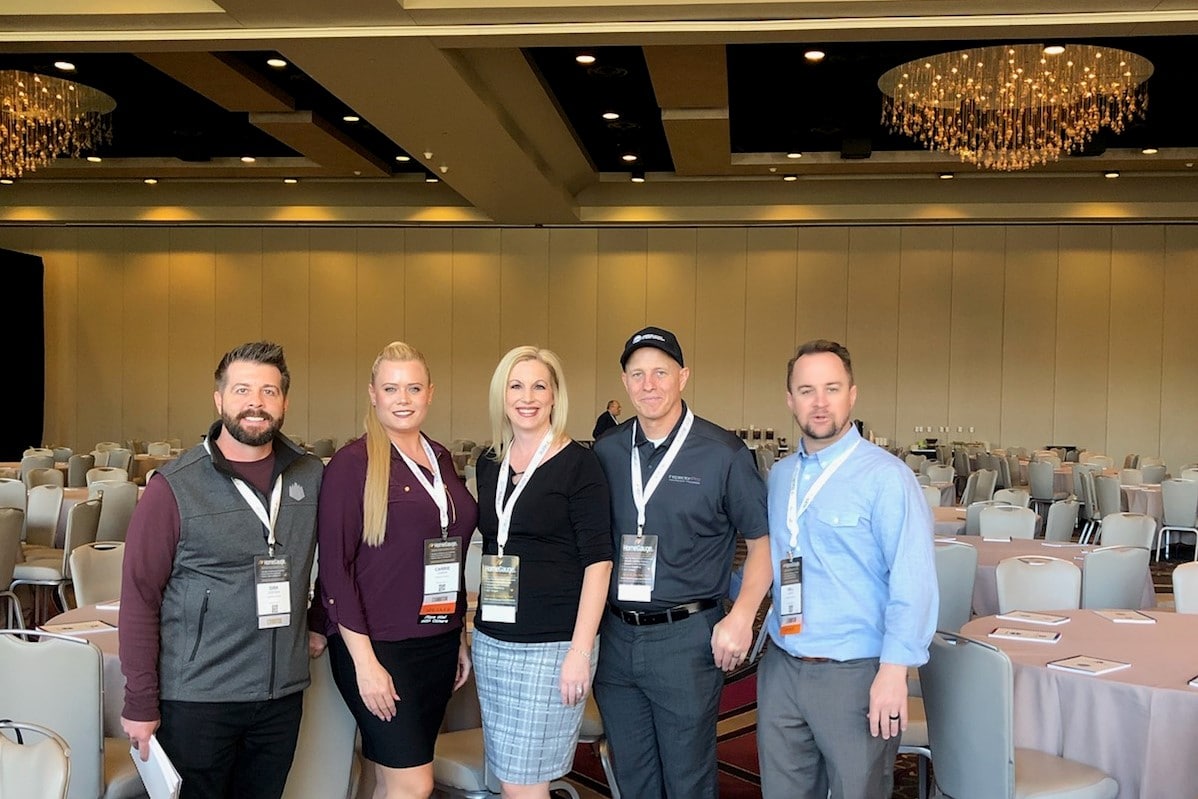Shopping Home Inspection Insurance 101
Last Updated November 8, 2023

Whether you’re a new or seasoned inspector, buying home inspection insurance can be daunting. With mile-long policies and seemingly identical advertising, it can be tough to determine exactly how insurance providers differ. And without understanding those differences, you can’t make an educated purchasing decision.
As a home inspection insurance provider, we get policy comparison questions all the time. And although we’d love for every home inspector to be insured with us, we understand that every inspection company has unique challenges and needs to consider. Therefore, we want to give you the tools you need to figure out what insurance coverage best fits your business’ needs. Below, we describe the three most important differentiators to examine when shopping for an insurance provider. To see a visual representation, download our free quote comparison chart.
 Apples to Apples
Apples to Apples
Has someone ever warned you not to compare apples to oranges? The popular metaphor teaches us that, although apples and oranges are both round fruits, we should be careful comparing them because they are in different subcategories. Instead, we should strive to compare apples to apples. By keeping our comparisons in the same group, we ensure that we draw more meaningful conclusions.
When shopping for insurance, you can compare apples to apples by getting quotes for the same coverage from multiple providers. Important coverage elements to keep the same across quotes include the following:
- Coverage types, like errors and omissions (E&O), general liability (GL) or both
- Coverage limits, such as $1 million occurrence and $1 million aggregate, and sublimits, where applicable
- Deductibles, including not just what you pay but when you pay it
- Endorsements (for example, mold or pest coverage)
- Claims history per a current copy of your loss runs (available from your current insurance provider)
- Estimated exposure, including how many inspections you intend to perform and the subsequent gross revenue you intend to earn
Because the elements of this list help determine both what your insurance will cover and how much it will cost, it’s essential that these elements line up in all of your quotes as you shop for insurance. Any variations in the information that you provide to one insurance provider and another will lead to an apples and oranges comparison. The quotes will look different and be priced differently, but not necessarily because one insurance provider is giving you a better deal than the other. Only by comparing insurance providers by using the same standards can you really flush out the disparities.
 Shopping for Exclusions
Shopping for Exclusions
Now that you’ve received quotes for the same coverage from multiple providers, it’s time to break down the exclusions. Exclusions are inspection services or situations that insurance policies do not cover. Insurance policies may have standard exclusions, optional exclusions or both.
Standard
By eliminating business practices that pose too great a risk of frequent or exorbitant claims, insurance companies can offer more competitive rates. For example, sinkholes may not be frequent, but they can be costly and are extremely difficult to spot during an inspection. Big risks like these are excluded, or not covered, by all home inspection insurance policies.
However, there are some policy exclusions specific to insurance providers. For example, some providers will not cover drone inspections. Inspecting with a drone while being covered under a policy with this exclusion could put you at risk of not receiving coverage for a drone-related claim. Therefore, it’s important that you make sure that the types of inspections you perform and the technologies you use to perform them are not excluded in your insurance policy.
Optional
A different type of policy exclusion is one that an endorsement can alter. For instance, by default, your home inspection insurance policy may exclude mold inspection coverage. However, for an additional fee, your provider can add the mold coverage to your policy as an endorsement. In these cases, exclusions exist until you opt in to the additional coverage.
Most home inspection insurance providers that offer additional services—like mold, pest and pool and spa—in their standard policies have sublimits. As the name suggests, sublimits cap certain risks defined in your policy.
When shopping for insurance, it’s important to note that sublimits may cause you to unintentionally be out of compliance with your state or contractual obligations. For example, if you work in a state that requires $1 million in mold coverage, you might not be getting it if your policy has a mold sublimit of $100,000.
 Shopping for Claims Handling
Shopping for Claims Handling
After determining what is covered, you have to learn how each item is covered. The primary principle of insurance—to cover the defense and payout costs of unexpected claims—is the same across the board. But how do insurance providers handle claims? That varies.
In determining how an insurance provider handles claims, there are a few questions you can ask:
When you report a claim, what do they do to resolve it?
We’ve found that 80 percent of claims against home inspectors are highly exaggerated or without merit. So even if you are great at your job, you are not immune to claims. Thus, it’s important to know how your insurance provider handles claims.
Does your provider have a dedicated claims staff? Do they communicate with you throughout the process? Do they do their best to close claims quickly? Finding out the answers to each of these questions will help tell you whether the provider has a good practice for handling claims.
When do they collect your deductible?
Deductibles come in two forms: simple deductibles and self-insured retentions (SIRs). Both are your responsibility to the insurance company in exchange for handling a claim. But the two work in different ways.
With a simple deductible, you don’t pay until the claim closes. That means you get all the defense before you pay out. And if closing the claim costs less than your simple deductible, you pay that lesser amount.
Alternatively, self-insured retentions require payment up front. You have to pay your SIR in full before the insurance company can start defending you. If your claim closes at a lower rate than your SIR, it’s not guaranteed that you will get the difference back. Be sure to read your policy to know how your deductible works.
 Because the industry uses the word “deductible” to describe both simple deductibles and SIRs, it’s important to ask your broker which one applies to your policy as you shop for insurance. The difference may impact how much money you want to save now to pay your part of a future claim.
Because the industry uses the word “deductible” to describe both simple deductibles and SIRs, it’s important to ask your broker which one applies to your policy as you shop for insurance. The difference may impact how much money you want to save now to pay your part of a future claim.
There are ways that providers can reward customers for claims-free years. Some insurance providers offer a diminishing deductible endorsement, which gives the insured party a percentage discount (typically up to 50 percent) on the deductible for the consecutive years they have renewed without incurring any claims. You can find benefits like diminishing deductible endorsements within the insurance provider’s policy.
What do they do to prevent claims before they happen?
You expect your insurance provider to be there for you when claims arise. But does your provider go the extra mile to protect you before claims occur? Insurance providers that offer risk management education and pre-claims assistance can help you stifle client complaints before they occur. However, as with most insurance services, just how much a provider’s program will benefit you can vary.
Does your provider publish regular risk management content to keep you up-to-date on their findings? Is their pre-claims assistance run by trained claims professionals ready to give expert counsel for your unique situation? And do they have numbers to support the success rate of their pre-claims assistance programs? Asking such questions can direct you to the programs that will serve you best.
Shopping with Confidence
Now that you know how to compare apples to apples, access policy exclusions and analyze claims handling, you’re prepared to shop for insurance. It may seem like a lot of work up front, but securing the right insurance coverage is essential to your business. And if insurance jargon is daunting or confusing to you, be sure to ask questions. Your insurance broker should be prepared and willing to explain clearly how their provider’s policy stands up to the rest.
The ASHI Reporter published this article in August 2018. See how the story appears in print on pages 6-7 below.





